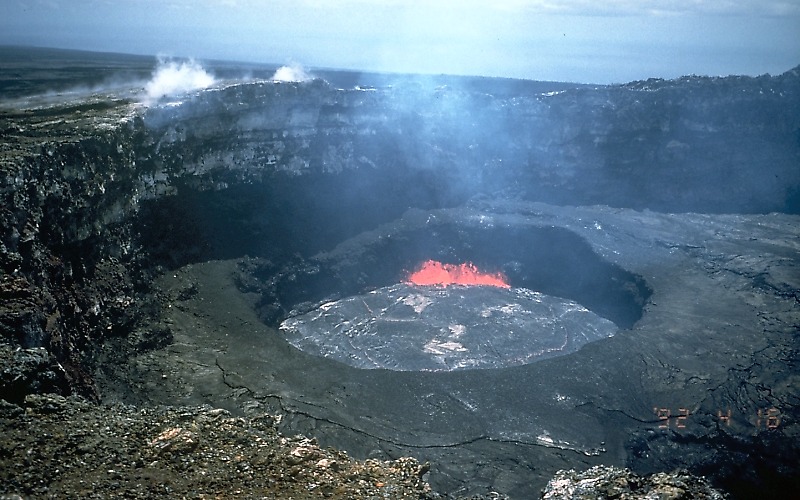EXPLORATION: Earthquakes and Volcanoes
Completion requirements
2. Volcanoes
Causes
Almost all volcanoes happen near plate divisions.
- Destructive (violent) volcanoes usually happen near subducting plates. i.e. The Pacific Ring of Fire
- Less violent volcanoes usually happen near diverging plates.
Watch the short video from National Geographic below. You will need to respond to this video in your learning guide.
- Cinder Cone
- basaltic magma ejected under high pressure from a narrow neck cools to form cinder and ash which falls back down to build the sides of the cone
- cone can build rapidly with steep sides i.e. 30 - 40 degree angle eg the volcano Paricutin in Mexico in 1943 grew 500 m in 8 months
- if the narrow neck of the cone becomes plugged the volcano can explode violently

Photograph by J.P. Lockwood on December 1, 1975 (Courtesy: USGS) - Shield Cone e.g. Kilauea in Hawaii
- often formed from basalt lava which has a low viscosity allowing the lava to move for some distance forming a broad gently sloped volcano i.e. 10 -20 degree angle
- less explosive tendency because the magma flows freely allowing the gases to escape

Photograph by M. Mangan on April 16, 1992 (Courtesy: USGS) - Composite Cone (or sometimes called Stratovolcanoes) e.g. Mt. St. Helens, Mt. Baker, Mt. Rainier, and Mt. Etna in Sicily
- consists of alternating layers of lava and ash
- shallow slopes at bottom, steep at top, looks like a "normal" mountain in many ways.
- lava layers permit the cone to attain considerable width while the cinder/ash layers encourage vertical growth
- as a result, some of the world's highest volcanic mountains are in this category
- can be very explosive spewing much material (i.e. cinders, ash, and
rock fragments) high into the atmosphere and / or rapidly down the side
of the volcano. Such a flow sears everything their path.
- mud flows, known as lahars, are frequently triggered as heat from the volcano melts snow and ice
Note: volcanoes often occur as "complexes" with different types of volcanoes together. Cinder cones often occur on the sides of shield or composite volcanoes.